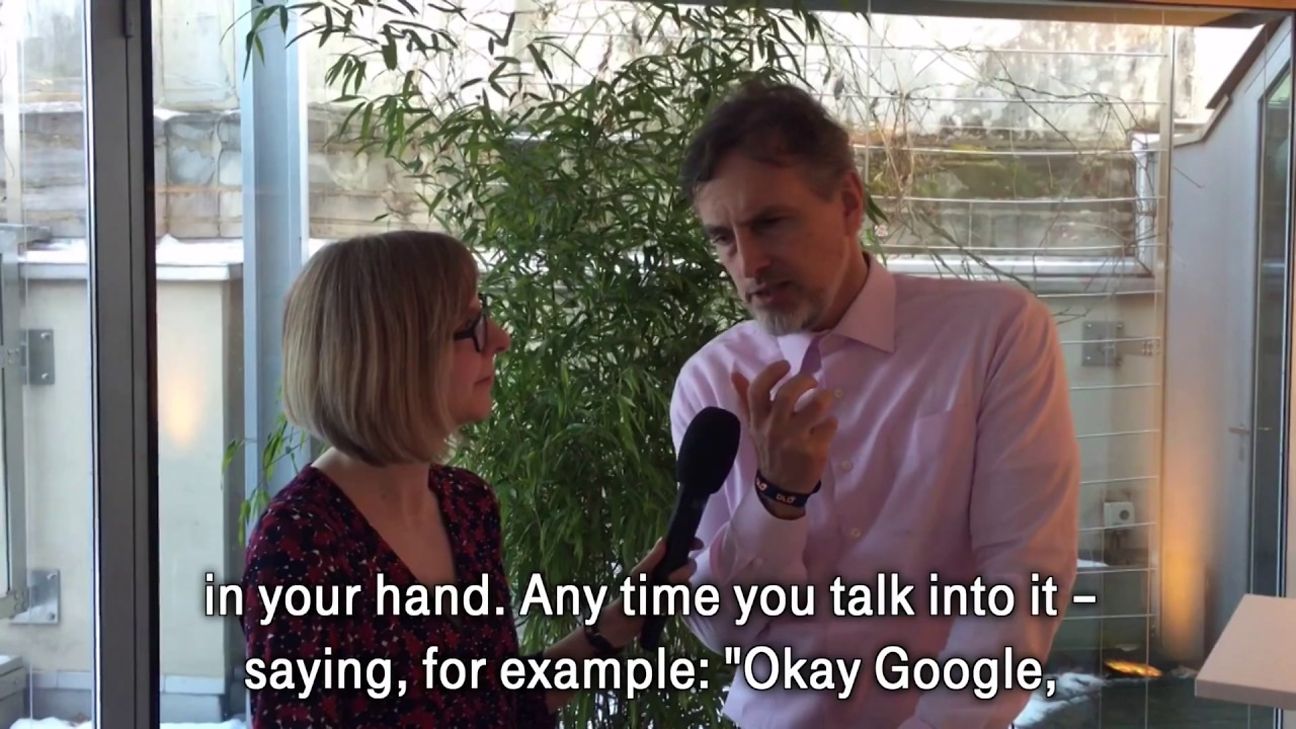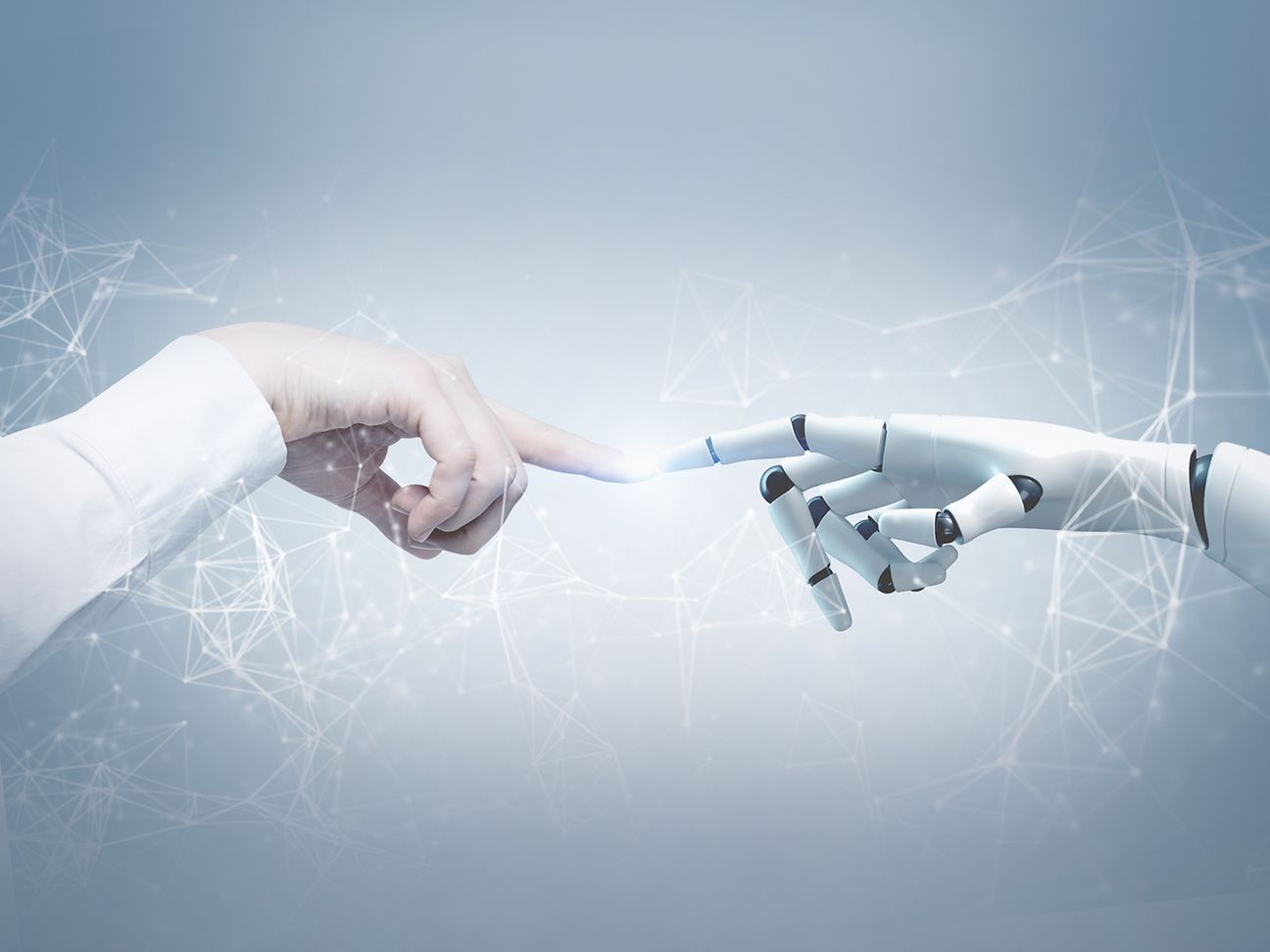

Video-Interview with Prof. Jürgen Schmidhuber, often described as the father of AI
Prof. Dr. Jürgen Schidhuber, Co-Director of the Swiss Institute for Artificial Intelligence Research IDSIA.
Mr. Schmidhuber, what is it you find so fascinating about Artificial Intelligence?
Jürgen Schmidhuber: Artificial Intelligence is the ultimate science. Because anyone who can build an Artificial Intelligence worthy of the name has by doing so resolved all the other problems too, as their Artificial Intelligence can of course be deployed to solve all those other problems as well.
But how can we breathe anything like intelligence into a dumb machine?
Jürgen Schmidhuber: The dumb machines we're talking about here are normally recurrent neural networks, which means that they're a little like your brain. The human cerebral cortex contains perhaps ten billion neurons, and each of them are connected with about another 10,000 neurons, so that you are carrying around perhaps 100,000 billion connections, or even more, in your cortex. And into them flow video, audio and pain signals – and hunger signals when your battery is empty. And out come the actions that control your muscles, your motors. Similarly, for example, a mobile robot has the task of always getting back on time to its battery recharging station without bumping into any obstacles, and without hurting itself every time it gets hungry. Now this machine's neural network learns its pathways by moving around in its environment – the relative strengths of its connections are totally random at first, so that it doesn't know anything at all – but it learns by trial and error to alter those connections, making it little-by-little into a better problem solver.
How are we doing at present with artificial intelligence, and where are we likely to be in five years' time?
Jürgen Schmidhuber: We still haven't got to a level of AI that could be compared with what a small animal like a crow, for example, or a monkey is capable of. But the work is going very well already in many areas. We have already achieved superhuman pattern recognition in some domains. But you might say that pattern recognition is something your child can do, that any baby can do that pretty well. And you'd be quite right. But pattern recognition is hugely more difficult than playing chess, for example. It was all the way back in 1997, a full 20 years ago, that the best chess players in the world ceased to be human. But no computer could get even close to the pattern recognition skills of a small child, who's capable after all of recognizing faces and glasses and chairs, etc. It wasn't until 2011 that we had created the first neural network that had learned to recognize certain patterns better than a human. The patterns in question were traffic signals in a competition held in Silicon Valley. And since then we have continued to benefit from the trend that computer resources become ten times less expensive every five years. By that logic, in 30 years' time, such resources will be a million times cheaper than they are today. And though we actually started doing this work in the 1990s, back then computing power was so weak that we were forced to wait until now – a time at which computers are 10,000 or 100,000 times faster – to be able to unfold the full potential of the powerful algorithms that we had started to develop way back then.
And those algorithms are now in use, for example, on the Smartphone you're holding in your hand. Any time you talk into it – saying, for example: "Okay Google, show me the way to High Street," there's this thing called an LSTM, or a "long short-term memory" network inside it, which we have been developing in my labs in Munich and Switzerland since the 1990s. And since 2015 Google has been implementing this network on all Android telephones, a step which made Google's language recognition functionalities much, much better than they were before. The approach represents a relatively universal learning method that one can use for all sorts of tasks where the task is to map sequences to other sequences by using some sort of thinking process. That's why some of the most high-value businesses in the world are now using it for all sorts of things – Google's Allo assistant and Amazon's Alexa use it, for example, to generate their speech signals. You can really do a hell of a lot with it, and yet it is still only a small part of what one needs to build one of those really cool little monkeys we mentioned earlier. But I think we now know, in principle at least, how to go about getting there. It'll take another few years ... and whether it's going to take exactly five years to do it, I couldn't say, but it'll definitely be another couple of years before we've got that far. But I don't think we'll need to wait for many decades.
And what do you say to people who are worried that future robots are going to be better than us, because they're more intelligent? They're quicker, they don't get tired, they don't get hungry. They don't complain, and they quite frankly make better employees – better bosses even.
Jürgen Schmidhuber: They do get hungry though, naturally enough. They certainly do need to secure their battery supply. And none of them want to feel pain. They don't want to bump into obstacles, etc. What all this means, then, is that all that emotional intelligence stuff has already come to form part of Artificial Intelligence as it exists today in my labs and elsewhere.
So, what do I have to say to people who worry about these issues? Well, I'll tell you anyway: personally, I'm not worried. I have been trying to build something capable of replacing me since the 1980s, because I consider that effort exciting and fascinating, and because I believe that it's the natural next step for mankind. And in taking that next step we are giving a helping hand to the entire universe. Because the scale on which we are going to get Artificial Intelligence – AI machines that are simply much cleverer than people in every respect worth mentioning – means that we will no longer occupy the summit of creation, though I personally think that may not really be desirable anyway. Rather, we should be delighted to be part of such a gigantic process, a process leading to the universe taking its next great step toward a higher level of complexity. These new entities will of course begin spreading out into space, as the bulk of resources are to be found outside rather than inside this thin biosphere. And eventually they will be completely capable of colonizing the entire Milky Way – that's entirely physically possible – in a way that humans would never be able to do. And that is something really amazing and wonderful and exciting. And that's why I'm not worried at all, and believe that nobody else has reason to worry either.

